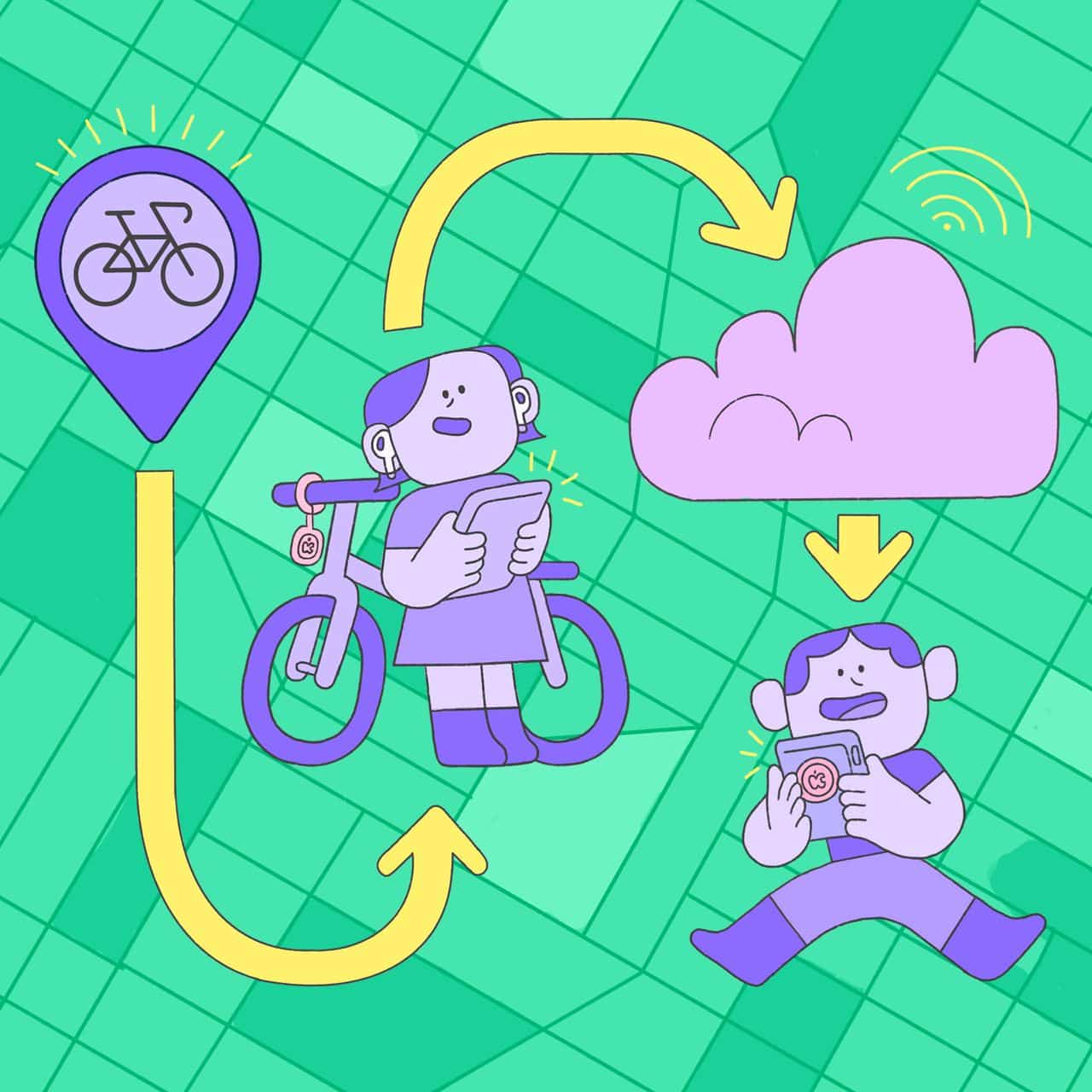How can we connect millions of people and there billions of devices without the headache of dealing with middlemen like telcos, satellite operators, and cable companies for connectivity?
Tech titans like Apple and Amazon have answered this question by converting the already existing devices of the customer into little cell towers and portable Wi-Fi hot spots that connect other gadgets around them to the internet. Instead of serving as wireless hubs solely for your own smartwatches, lights, and sensors, your iPhones and Echo speakers can help other people’s gadgets stay connected as well, whether we know it or not.
New connectivity devices – a curse hidden in a boon?
On Friday, Amazon announced its expanding its Sidewalk network, which already includes certain Ring Floodlight Cam and Spotlight models, to include Echo devices released in 2018 and after.
This announcement comes on the heels of Apple’s AirTag introduction. These coin-size trackers can help locate lost items almost anywhere because they use the company’s Find My network. Each AirTag sends out a low-powered wireless signal, which can be received by the iPhones, iPads, and Macs in a given area.
What it means is that perfect strangers will be able to use slivers of the bandwidth of our device that sends and receives minute radio signals that are not related to us. This works both ways, since the device sends, and receives signals.
Users can opt-out of these systems, but the tech giants are betting that we won’t, because of the benefits that these new networks will provide benefits, from finding our lost possessions, pets and loved ones to remotely controlling our smart locks, security systems, and lights.
“What we’re seeing now is the battle of the mesh networks,” says Ben Wood, chief analyst at CCS Insight, a tech industry consultancy. “The use cases of these networks are limited only by customers’ imaginations.”
How Apple’s Find My Works
The devices like AirTag send out millisecond-bursts of light every few minutes. These waves ping every possible iPhone, iPad, and Mac in a range of about 30 feet. This regular burst chatter is the key to Apple’s Find My network. For example, if you lose your iPhone or AirTag-attached keys in another country, the iPhones of the strangers nearby would exchange a tiny amount of encrypted data with each other as they come in range. By the time we open the Find My app, even if we are back in our country, the data would’ve made its way to us.
Fadel Adib, an associate professor of electrical engineering and computer science at MIT, says that this tiny exchange method has been used since 2011 to find the apple devices and doesn’t even kill the batteries of the phone or inflates the internet bills. When your own iPhone 11 or newer is in proximity to an AirTag, the two can also communicate via ultra-wideband radio frequency using Apple’s custom-designed U1 chip. This allows you to pinpoint the AirTag’s location. But that doesn’t mean that it can be used as a bug to track other people’s location as a way to spy on them. For example, if you have dropped your AirTag in another person’s bag, the person will get an alert on their iPhone that an unfamiliar AirTag is nearby.

How Amazon’s Sidewalk Works
Manolo Arana, general manager of the Sidewalk project at Amazon says, though it uses encryption for security, Amazon’s sidewalk is different from Apple’s Find My network in many ways. Firstly, the devices that power it doesn’t move so that the network is not in constant flux. Secondly, instead of just tracking location and identifying things, Sidewalk can be used for any kind of short two-way communication.
Cities blanketed by the Sidewalk network could allow devices to function even when their main connection to the internet goes down or is unavailable. For example, your Ring smart security light is too far from your home’s Wi-Fi router, or maybe you just lose internet connectivity. If a neighbor’s Echo or Ring device is in range, your security light could still function by routing its tiny bits of traffic through that other connection.
Tile, a popular maker of Bluetooth device-tracking tags, is adding the ability to track them through Amazon’s Sidewalk network, which allows them to connect directly to Echo devices.
LoRa and its incorporation into Sidewalk
Apple’s Find My Network uses short-range wireless Bluetooth signals to communicate with nearby Apple devices. Amazon’s Sidewalk also uses Bluetooth but is adding long-range wireless technology known as LoRa to the Sidewalk network via certain Echo and Ring devices. As per Marc Pegulu, vice president of LoRa at semiconductor-maker Semtech, one of Amazon’s technology partners, LoRa systems have generally been used for enterprise applications, such as sensors and actuators in manufacturing and the energy industry. They can communicate small amounts of data across many miles when placed atop towers or even on satellites, using relatively little power. When placed inside a device like an Echo speaker, the range can still be about a mile inside a home.
How You Can Opt-Out
The owners of participating Echo and Ring devices can elect not to be part of the Sidewalk network, but the toggle to opt-out is buried four menus deep in Amazon’s Alexa and Ring apps. While you can opt-out of Apple’s Find My network, you do it by turning off Find My. It means, if you don’t help others find their misplaced devices, you risk losing yours.
People love Amazon, becoming an intrinsic part of many people’s lives, particularly during the pandemic. In the same way, Apple has built a high level of trust with its customers, allowing it to roll out its Find My network over more than a decade with little pushback from users. AirTags, in particular, are classic Apple. Who would switch to Android when it might mean suddenly not being able to find their keys?



